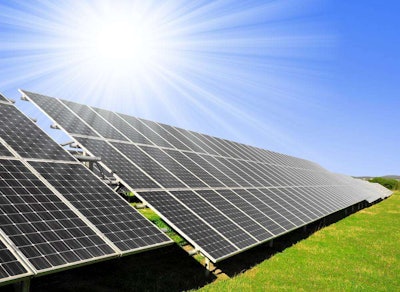
A team of engineering researchers at the University of Arkansas has developed a new method of storing the thermal energy collected through solar panels that is not only cheaper than current methods, but does less damage to the storage tanks themselves.
According to a report from Science Daily, the work is the result of a $770,000 award from the U.S Department of Energy in 2008 to develop a new method of storing thermal energy.
Current methods are plenty efficient, researchers say. The molten salts, oils and beds of packed rock do a good job of holding in the thermal energy collected by solar panels and therefore meet the Department of Energy’s standards. However, they’re expensive and tend to cause damage to the walls of the storage tanks in which they reside over time.
The alternative method civil engineering professor Panneer Salvam’s team has developed uses parallel plates of a specially-formulated concrete that can withstand temperatures up to 1,112 degrees Fahrenheit.
This new storage method uses steel pipes to transfer the heat collected by the solar panels to these concrete plates where it is absorbed until it can be transferred to a generator.
The method is slightly less efficient that the method of a packed rock bed, but the concrete plates don’t damage the storage container like the rock bed and only cost $0.78 per killowatt hour to operate — a far cry from the $15 per kilowatt hour the Department of Energry set as a goal.










